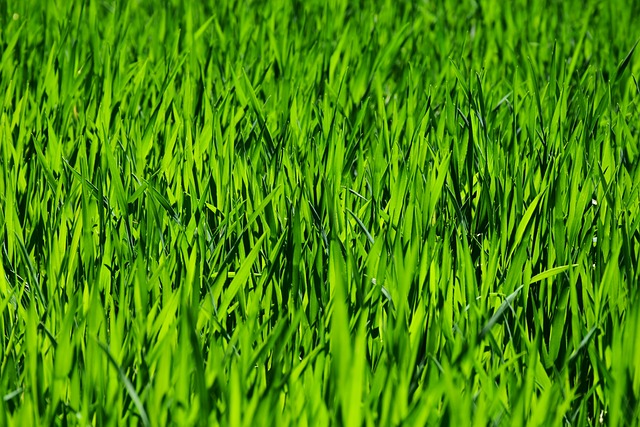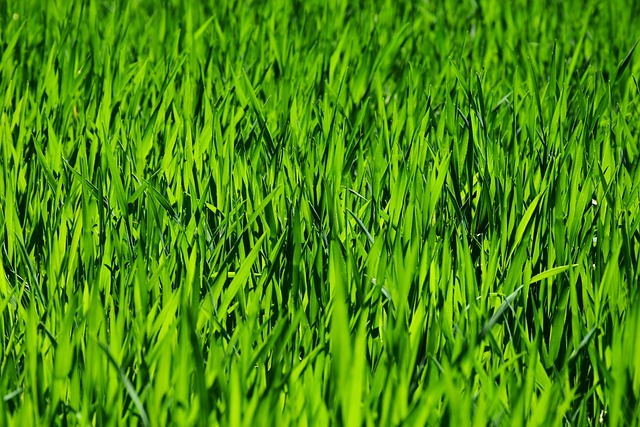Lawn Care and Landscaping are essential for maintaining a healthy and vibrant lawn that stands out as a neighborhood highlight. A successful lawn care routine involves tailored fertilization based on grass type—cool-season grasses need fall and early spring feeding, while warm-season grasses require late spring to early fall applications. Using balanced fertilizers high in nitrogen, phosphorus, and potassium supports the lawn's health by fostering lush growth and strong roots. Regular soil testing and pH adjustments further optimize fertilizer effectiveness. Weed management is another critical aspect, starting with choosing the right grass seed for your climate and maintaining proper soil conditions. A combination of preventative measures and selective herbicides, applied at the right times, helps maintain a weed-free lawn. It's important to follow product labels and integrate sustainable pest management practices beyond chemical control. Consistent monitoring and timely treatments ensure a lush, resilient lawn that upholds the standards of effective Lawn Care and Landscaping all year round.
Maintaining a lush, green lawn requires strategic planning in both fertilization and weed control. This article delves into the nuances of effective lawn care, offering insights into how to optimize your yard’s health with proper fertilization techniques as outlined in “Understanding the Basics of Lawn Fertilization for a Vibrant Yard.” It also explores the intricacies of eradicating unwanted weeds through “Strategic Weed Control: Methods and Best Practices for a Weed-Free Lawn.” Integrating these practices into your overall lawn care and landscaping routine, as detailed in “Integrating Fertilization and Weed Control into Your Lawn Care and Landscaping Routine,” will ensure a beautifully maintained outdoor space that stands the test of time.
- Understanding the Basics of Lawn Fertilization for a Vibrant Yard
- Strategic Weed Control: Methods and Best Practices for a Weed-Free Lawn
- Integrating Fertilization and Weed Control into Your Lawn Care and Landscaping Routine
Understanding the Basics of Lawn Fertilization for a Vibrant Yard

A vibrant yard is the envy of the neighborhood, and understanding the basics of lawn fertilization is key to achieving this desirable outcome. Lawn Care and Landscaping practices are foundational to maintaining a healthy turf that withstands various environmental conditions. The type of grass species in your region dictates the specific nutrients your lawn requires. Most cool-season grasses, such as Kentucky bluegrass and fescues, benefit from fall and early spring fertilization to store up energy for the hot summer months. Conversely, warm-season grasses like Bermuda or St. Augustine grass thrive with nutrients applied in late spring through early fall.
For effective lawn fertilization, it’s important to select a balanced fertilizer that contains the primary macronutrients: nitrogen (N), phosphorus (P), and potassium (K). These elements are essential for leaf growth, root development, and overall turf health. Additionally, proper timing and application rates, as recommended by Lawn Care and Landscaping professionals, ensure that nutrients are available when the grass needs them most. Beyond these basics, understanding soil pH levels and tailoring your fertilization program to correct imbalances can further enhance lawn vitality. Regular testing of your soil can guide you on which nutrients to add or adjust, leading to a lush, green lawn that’s the pride of any homeowner.
Strategic Weed Control: Methods and Best Practices for a Weed-Free Lawn

A healthy, green lawn is a hallmark of meticulous lawn care and landscaping, but maintaining such a landscape requires strategic weed control measures. Weeds can quickly overtake a lawn if left unchecked, compromising its aesthetic appeal and potentially affecting the health of the turf. Effective weed management involves both preventative and curative tactics tailored to the specific types of weeds present in the lawn.
Preventative strategies include selecting the right type of grass seed for your local climate and soil conditions, ensuring proper soil pH levels, and maintaining optimal soil fertility through regular lawn fertilization. This approach discourages weed invasion by fostering an environment where desirable grass species can thrive, outcompeting weeds for space, light, and nutrients. Additionally, implementing a well-timed fertilization schedule helps in strengthening the turf’s resilience against weeds. For existing weeds, it is crucial to identify the species and apply targeted herbicides when lawn care and landscaping practices are least disruptive to the desirable plants, often in the spring or fall when weed germination is highest. Always follow label instructions and local regulations regarding the use of herbicides, and consider integrated pest management (IPM) techniques that combine chemical control with mechanical and biological methods for a more sustainable approach. Regular monitoring and timely interventions are key to maintaining a weed-free lawn, ensuring that your landscaping remains pristine and vibrant throughout the growing season.
Integrating Fertilization and Weed Control into Your Lawn Care and Landscaping Routine

A robust lawn care and landscaping routine is pivotal in maintaining a lush, healthy lawn. Integrating fertilization with effective weed control practices ensures that your grass receives the necessary nutrients to thrive while simultaneously suppressing unwanted weeds. Fertilizers rich in essential macro-nutrients like nitrogen promote vigorous growth and green coloration in turfgrass, enhancing its resilience against invasive weeds. Timely applications of a balanced fertilizer can also improve soil health, which is fundamental for the overall vitality of your lawn.
For optimal results, it’s advisable to synchronize your weed control measures with your fertilization schedule. Pre-emergent herbicides applied during fertilization sessions can prevent weed seeds from germinating, thus reducing the weed burden over time. Post-emergent treatments, when necessary, should be carefully selected and applied to target existing weeds without harming desirable grass species. A well-planned lawn care and landscaping regimen that incorporates both fertilization and targeted weed control not only creates a visually appealing outdoor space but also contributes to the environmental health of your landscape.
Effective lawn care and landscaping practices are pivotal in cultivating a lush, thriving yard. A well-balanced fertilization regimen promotes optimal grass health, while strategic weed control methods ensure a uniform, verdant expanse free of unwanted vegetation. Integrating both aspects into your routine not only enhances your lawn’s aesthetics but also fortifies its resilience against environmental stressors and pests. By adhering to the insights provided in this article on lawn care and landscaping, homeowners can achieve a landscape that is both beautiful and sustainable. Remember to regularly monitor your lawn and adjust your approach as needed to maintain its vibrancy throughout the growing season.
